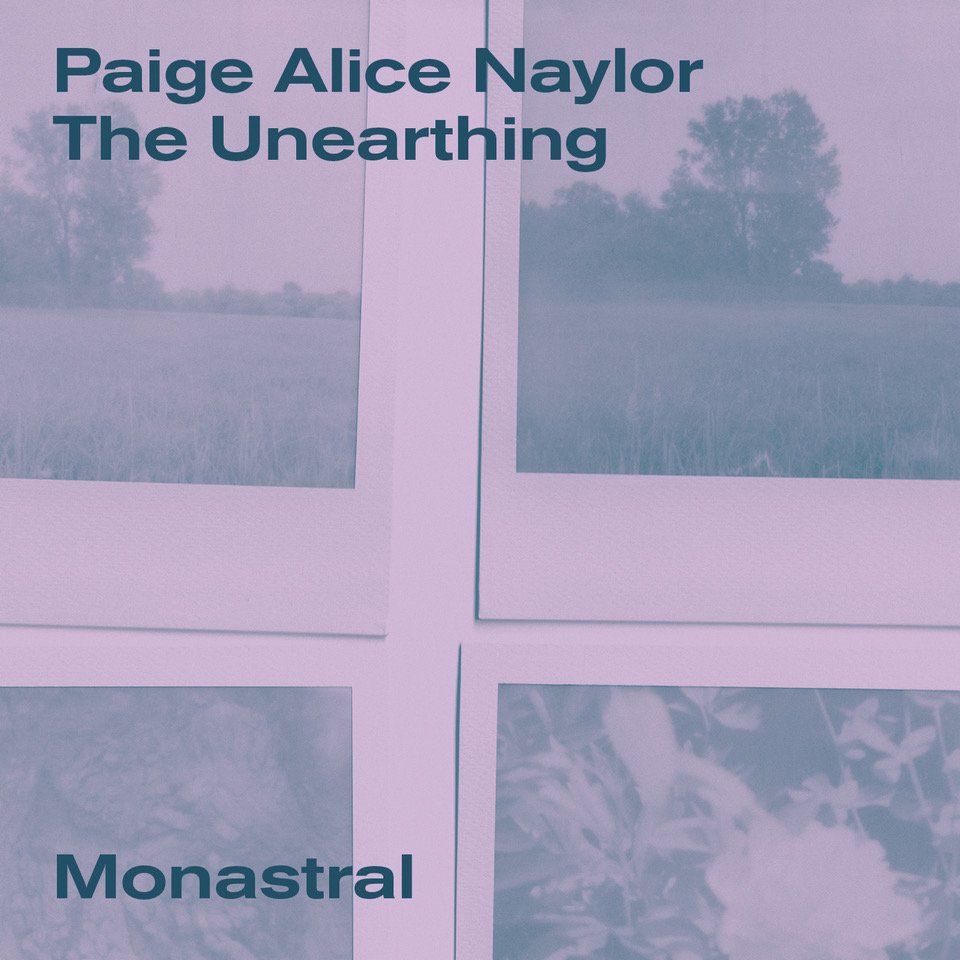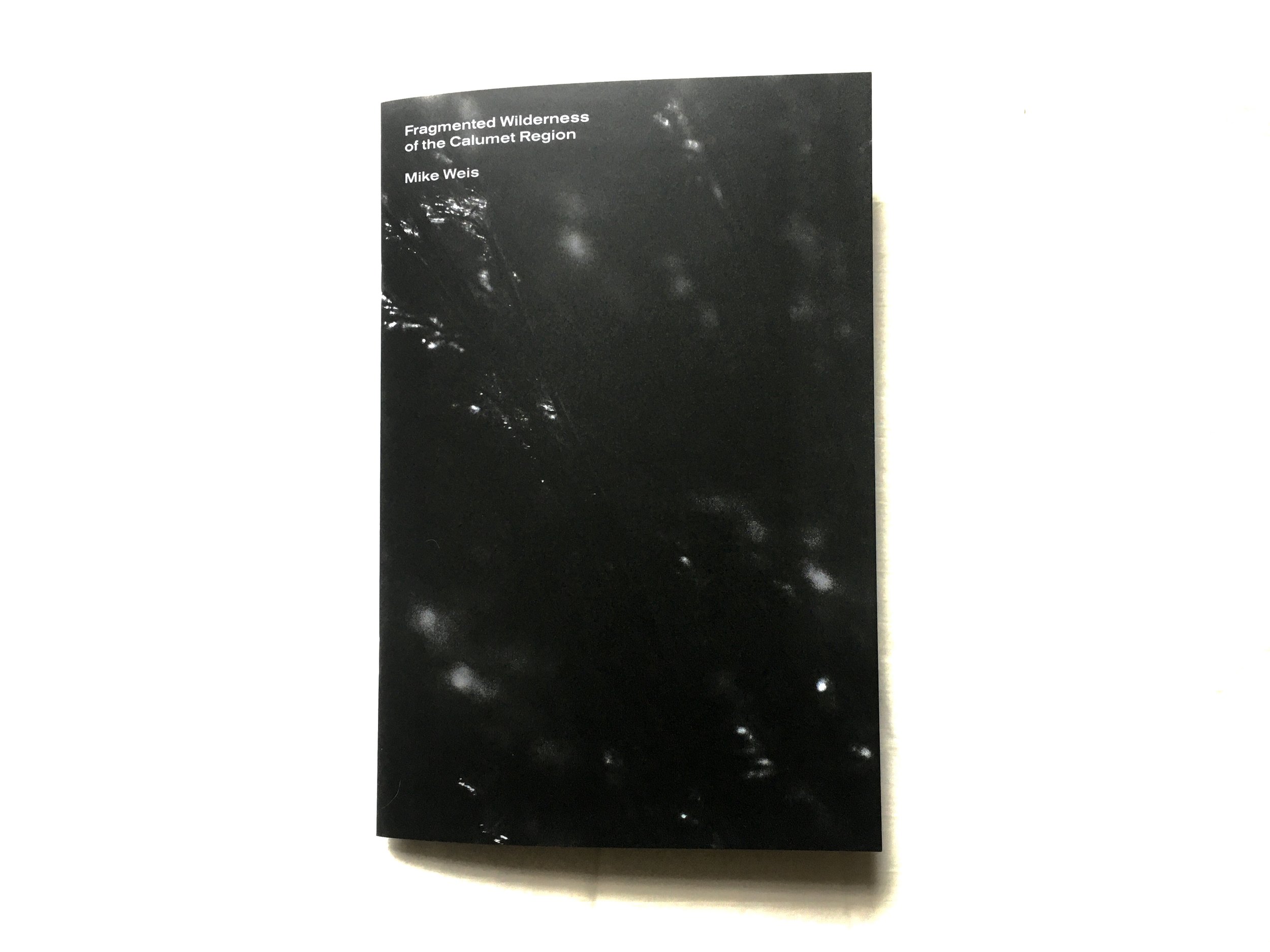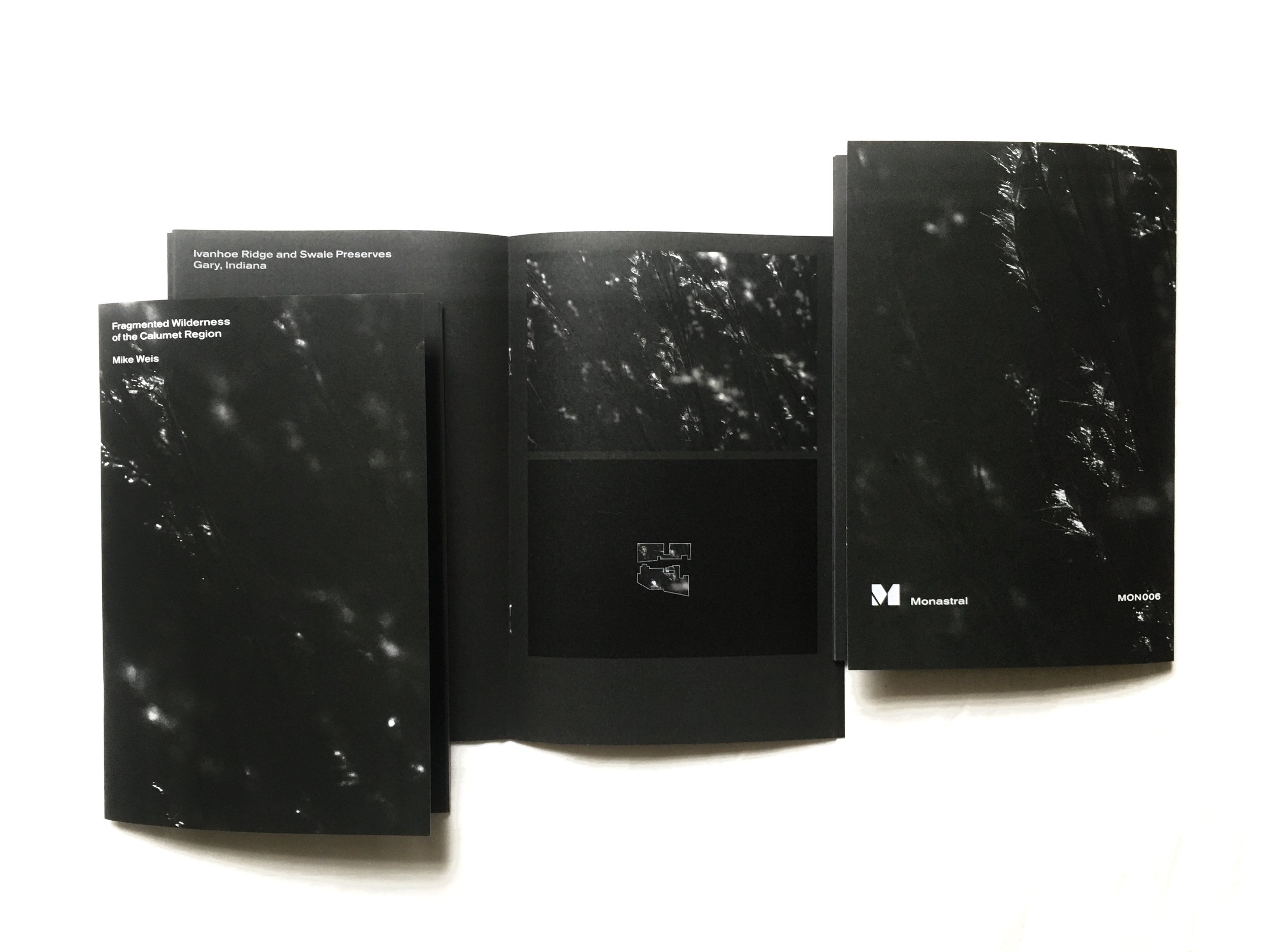MON011: Paige Alice Naylor, The Unearthing
The Unearthing is the debut album by Chicago-based multimedia artist and electronic musician, Paige Alice Naylor. This work is a passage into limbo, an intermediate state between living and dying through the lens of tragic loss and metaphors of more-than-human life. Paige is a classically trained vocalist with a specialty in vocal, electronic processing. For The Unearthing she uses her voice, electronics, Pure Data synthesis, a broken turntable, vinyl samples, field recordings, and synthesizer to create a holding place for metamorphosis. These songs and sonic textures were recorded and produced from 2020-2023 in Naylor’s home studio, upstate New York, and in residency at Pachamanka in the driftless region of Northwest Illinois. There she formed the concept and text for the work told from the land’s perspective and its constant cycles of death and rebirth.
The Unearthing is a journey through atopia, a transitory space, of a new euphoric ambient genre. It insists that to be full of life is to be full of death, and to not be afraid.
MON010: Javye Montgomery, Breathing With Each Ear (Hour 3)
Jayve Montgomery’s western hemisphere life started at the bottom. And now we are here:
Ascending from the sound at the bottom of a Transatlantic slave ship, Jayve Montgomery is an improvising sound artist deeply listening through time to explore the embodied evolution of epigenetic reverberations. Musically, Chicago is home; geographically, nowhere is home; sonically, the sustained space created by breathing through woodwinds and bells is home. He lives in Outer Music, TN.
This work continues Montgomery’s explorations of electroacoustic bell and horn stochastic granular processing employed in the name of exploring his mitochondrial journey from African to African-American, human to Black; the belief of whiteness; and the proclivity for Christian Dominion to kill even the earth in the name of god. Bells and horns are sound markers in the Plantation Soundscape Memory of formerly enslaved WPA Slave Narrative interviewee Charley Williams, one of Montgomery’s inspiration ancestors who can provide evidence for the wretchedness of using sound to train human livestock with sonic trauma. Jayve is always employing these instruments to distribute one-billionth of the discomfort being human livestock cargo packed away on shelves under a boat in the name of commerce and white supremacy can bring in the soul possessed by a conscience benefitting from the spoils of patriarchal Christian white supremacist dominion.
Montgomery has been chasing the sound at the bottom of a Transatlantic slave ship since his first max/msp programming experiment - sending twenty-two parameters of a delay, each with a different random value - and exploring the root genetics of acoustic sounds in a process he called granular digiphoresis, akin to gel electrophoresis whereby DNA is charged and lead to reveal its basecomponents in a substrate.
These particular recordings were made for a few hours each day for a week and whittled down to 5 hours during listening. Hour 3 features alto and soprano saxophones, bowed bells and kalimba. Saxophones are captured by air and by piezo mouthpiece pickup providing atmosphere and microcosms of chortles and breaths. One stereo process path is using prime numbers to create a drifting drone and the other stereo process is processing bowed bells with random ambience.
These are meditations on the expiscated wretchedness that made the new world. Some titles may sound familiar but are given new context, amidst the language and circumstance of shelved stowage. Breathing with Each Ear (Hour 3) will be released by Monastral on November 3 as a limited-edition cassette and digital download.
MON009: Matt Christensen & P.M. Tummala, Yellow Works
"Vintage" can be a hard thing to chase. Especially in an age where the sound of a recording can be altered so easily and for so cheaply. What often makes things sound vintage comes down to an attitude and approach. Real memories, false memories, invented memories and memories that aren't even memories, but old feelings. These recordings were made with old equipment along with newer equipment whose technology hasn't really been improved on or changed for nearly 50 years. The recording medium was really the only digital and "modern" stage. This wasn't the intention. The sound that was created started to demand less. Less processing, less overdubbing, less direct sources, less lighting in the room. The results were pieces that smelled of dust and incense and drifting off to sleep. Feelings of yellowed sun and green leaves blurred by summer night air.
Yellow Works marks the first collaboration by long-time friends Matt Christensen (synthesizer, Fender Rhodes) and P.M. Tummala (vibraphone, synthesizer, Fender Rhodes) as a duo. The album will be released by Monastral as a limited-edition cassette and digital download on September 2, 2022.
Matt Christensen is the singer and guitarist for the long-running and influential ambient-rock band Zelienople and has released numerous solo albums over the years. P.M. Tummala is a multi-instrumentalist and producer who has released two solo albums of Indian Modernist sound collages, Abstractions in Meera and Brindavan Mon Amour.
MON008: Mike Weis, Ring the Bell for the 10,000 Forgotten Things
Mike Weis is the percussionist for the two decades-long Chicago ambient-rock band, Zelienople and an accomplished improviser with projects that include Slow Bell Trio, Good Stuff House, Simon Scott/Mike Weis duo and others. Weis has trained with master drummers from ritual music traditions such as West African Ewe music and Korean Shaman and Buddhist music. Ring The Bell for the 10,000 Forgotten Things is Weis’ sixth solo album.
Weis is also a photographer, a landscape ecologist, and a member of the Midwest Society of Acoustic Ecology and this album and book mark the moment when all of these varied disciplines come together in one project. The process began in the Fall of 2019 when he participated in the Calumet Artist Residency program at Miller Woods (the western property of the Indiana Dunes National Park) in Gary, Indiana. During his residency, Weis observed and studied the ecological succession of Miller Woods, a process that has historical roots dating back 10,000 years of stewardship by various indigenous tribes and formal academic study beginning in the late 19th century.
During his residency, Weis photographed and made field recordings of the ecological succession of Miller Woods, a process that has historical roots dating back 10,000 years of stewardship by various indigenous tribes and formal academic study beginning in the late 19th century. The field recordings serve as the foundation for Weis' percussion and electronic improvisations on Ring the Bell for the 10,000 Forgotten Things and the photos from this period are collected in Fragmented Wilderness of the Calumet Region.
MON007: Rocio Zavala, Invisible Miracles
Invisible Miracles is the debut album by Rocio Zavala, a visual and sound artist from Mexico currently based in Chicago. Her work connects the space between spirituality and science in the most natural terrain where both exist – the human body. She builds her own electronic instruments, including synthesizers and zither, that often integrate light and electricity from the human body as modulators. While exploring the boundaries of these instruments, she creates haunting, sublime compositions that access the materiality and metaphysics within wave spectra and listening.
Invisible Miracles is a journey through many years of experiences, travels, and states of consciousness. A collection of recordings and live performances made in Chicago and Hidalgo, Mexico between 2016-2021, each track was composed differently using a combination of synthesis, field recording, sampling, improvisation, looping, light amplification, and diy circuitry. Drawing on a wide-range of inspiration – a Hindu temple in Chicago where she focused on her meditation and yoga practice, Dadaist-influenced cut up and automatic writing techniques, the supernatural lore surrounding the mountains of La Estanzuela – the pieces channel the inevitable oscillation between states of the body and amplified sound as magnetized and electrified energy.
Monastral presents Invisible Miracles on May 6 as a digital download and limited edition cassette.
MON006: Mike Weis, Fragmented Wilderness of the Calumet Region
Fragmented Wilderness of the Calumet Region is the companion book to Mike Weis' sixth solo album Ring the Bell for the 10,000 Forgotten Things. During his residency with the Calumet Artist program in 2019, Weis made hundreds of photographs of one species of native grass, Little Bluestem (Schizachyrium scoparium). He then superimposed the shapes of maps of protected nature preserves in the Calumet Region on the Little Bluestem images and then cut and copied these shapes onto a diptych panel to emphasize the cut up and fragmented practice of land use in the Calumet Region and how little of land portion is preserved in its natural state. Fragmented Wilderness of the Calumet Region collects these panels in a catalog-style photo book designed by Common Name. You can find links to the photos from the book here.
MON005: P.M. Tummala, Abstractions in Meera
Monastral presents Abstractions in Meera, the new album from P.M. Tummala. Inspired in equal parts by Indian visual artists and architects like Raza, Gaitonde, Mohamedi, Doshi, and Rewal and the Hindustani, Carnatic, and Tollywood/Bollywood music of his childhood, he explores identity and false memories to create a sound companion to Indian modernism. While Bollywood composers in the 60s and 70s were known to inject western styles like rock, salsa, swing, Philly soul, and disco into their songs, Tummala re-imagines this tradition through a blurred lens of influences that span spiritual jazz, dub, musique concrete, Tropicália, ambient, and hip-hop/vinyl culture. With instrumentation that includes sampler, synthesizer, vibraphone, electric piano, and tape, he spins a dreamlike, lost-in-time collage of warped melodies and ghostly rhythms that plays as an alternate history of ‘70s era Indian soundtrack music.
Abstractions in Meera is available now as a limited-edition cassette and digital download.
“Abstractions in Meera is high quality dream music – and there is something hugely potent and generously laced throughout its numerous brain-tickling folds.” - Obladada
MON004: Allen Moore, Lived a deviL
Allen Moore is a visual and sound artist from Robbins, Illinois, near Chicago’s South Side, whose work converses with the signifiers of African-American culture. At the heart of his practice is graphite, which he often uses in his drawings, paintings, and sculptures. Working with this material in his visual work led him to hand casting records with graphite, creating warped mirrors of old soul records. These graphite records served as the foundation for sound art pieces and live performances with Moore using up to four turntables to create collages of hypnotic textures and rhythms that resonate like hymns of fractured nostalgia.
Monastral presents Lived a deviL, his second album following 2019’s self-released Solar Church. The recent studio sessions proved to be a catharsis from the isolation of quarantine, the collective anger that led to last year’s protests, and the shade of hope that followed. For these recordings, produced and arranged by P.M. Tummala, Moore expanded his palette to include records cast from graphite and okra leaves, synthesizers, Fender Rhodes, and samples that narrate tragedies of famous and lesser-known Black historical figures. The resulting body of fully formed songs, hazy interludes, and improvised loops and drones capture an artist navigating the distance between joy and heartbreak, structure and formlessness, and finding an inner peace in the tumult of history.
Lived a deviL is social sound art that plays like a dubbed-out, Afrofuturist beat-tape of half-remembered dreams. It is available now as a digital download and limited edition cassette.
MON003: Chloe Yu Nong Lin, Pi Sound 琶聲
On March 1, 2021, Monastral releases Pi Sound 琶聲, the debut album by Chloe Yu Nong Lin. Lin is a musician from Taiwan practicing electroacoustic composition and improvisation on the pipa, or Chinese lute, an instrument that dates back to the Han dynasty almost 2000 years ago. In Lin’s audio-visual works, she focuses on the relationship between her body movements and her instrument. Her performances involve music, sounds, silence, movements, light and shadow. Working with patch systems, Lin combines the acoustic sounds of the pipa with unpredictable electronics to discover the instrument's new sounds in the electroacoustic world. Lin’s unique contemporary process liberates the pipa from the dusty confines of tradition, revealing exciting possibilities for an instrument that has been generally limited to traditional court music orchestras, conservatories and more recently, Western classical music. is the debut album by Chloe Yu Nong Lin. Lin is a musician from Taiwan practicing electroacoustic composition and improvisation on the pipa, or Chinese lute, an instrument that dates back to the Han dynasty almost 2000 years ago. In Lin’s audio-visual works, she focuses on the relationship between her body movements and her instrument. Her performances involve music, sounds, silence, movements, light and shadow. Working with patch systems, Lin combines the acoustic sounds of the pipa with unpredictable electronics to discover the instrument's new sounds in the electroacoustic world. Lin’s unique contemporary process liberates the pipa from the dusty confines of tradition, revealing exciting possibilities for an instrument that has been generally limited to traditional court music orchestras, conservatories and more recently, Western classical music.
Pi Sound 琶聲 was produced by P.M. Tummala in August 2020, one week before Lin moved back to Taipei after spending three years in Chicago. Lin spent that time immersed in the city's improvised music scene and the album is a reflection of her musical journey. Pi Sound 琶聲 features Lin performing improvised pipa duets on each of the album's seven tracks and will be available as a digital download.
MON002: P.M. Tummala, Brindavan Mon Amour
Monastral presents P.M. Tummala’s debut album, Brindavan Mon Amour, a collage of Indian film music from an alternate history.
Drawing inspiration from some of the more atmospheric incidental music and cues from 60s and 70s Tollywood and Bollywood films, he layers synth-heavy Hindustani and Carnatic-influenced melodies and drones over a foundation of hazy textures and loops partially informed by the ghosts of 70s library music and 90s ambient and shoegaze. The resulting work attempts to form a bridge between contradictions: distant and intimate, nostalgic and looking ahead, lost-in-time and contemporary.
Recorded on and off over a period of a few years in Brooklyn and Chicago by Tummala, the digital album was mixed and mastered by Alex Inglizian at Experimental Sound Studio in Chicago. Brindavan Mon Amour is available as of August 2020 as a download and can be purchased here.
P.M. Tummala - ESS Quarantine Concert May 3, 2020
MON001: Mike Weis, Sound Practice
Monastral is excited to announce that its inaugural release will be the third solo album by Chicago percussionist/sound artist Mike Weis. Sound Practice follows 2014’s Don't Know, Just Walk on Type Records and Loop Current/Raft on Barge Recordings in 2011. Weis may be best known as the drummer in the decade-plus band, Zelienople as well as other acts including Kwaidan and Good Stuff House. He has also collaborated with Scott Tuma, Mind Over Mirrors, Jasper TX, Black To Comm, Xela, The North Sea and Haptic. In addition to his experimental projects, Weis has studied and performed West African rhythms with Ghanaian master musician and high priest of the Yewe cult, Gideon Foli Alorwoyie. More recently, he has been studying Korean shaman ritual music with the Korean-American group Ilkwanori and with master drummer Sora Kim from Seoul, Korea.
For this new album, Weis eschews the use of digital loops and samples that were the backbone of his previous releases opting for a direct, present moment interaction with his instruments. The two long-form pieces were recorded directly in the studio in one take without overdubs or edits using his signature unorthodox drum kit made up of a large bass drum, Chinese gong, Tibetan singing bowls, cymbals and traditional Korean folk drums- changgo and buk. Weis augmented these percussion instruments with a tabletop guitar (prepared with aluminum rods, gong and vibrating dildos) and real-time manipulations of tape recordings of his gongs, bells and cymbals.
Sound Practice will be available in October 2016 as a download and limited LP release, edition of 300, pressed on virgin vinyl with a sleeve designed by Common Name. The LP will be distributed in the US by Thrill Jockey and internationally by Morr Music or it can be purchased directly from Monastral here.
Mike Weis will celebrate the release of Sound Practice with solo performances in Chicago in the fall/winter:
October 15 at Comfort Station, 7p, with Haptic.
November 5 at the Zen Buddhist Temple Chicago, 7p, with Zelienople.
December 14 at The Hideout, 9p, with Olivia Block.














